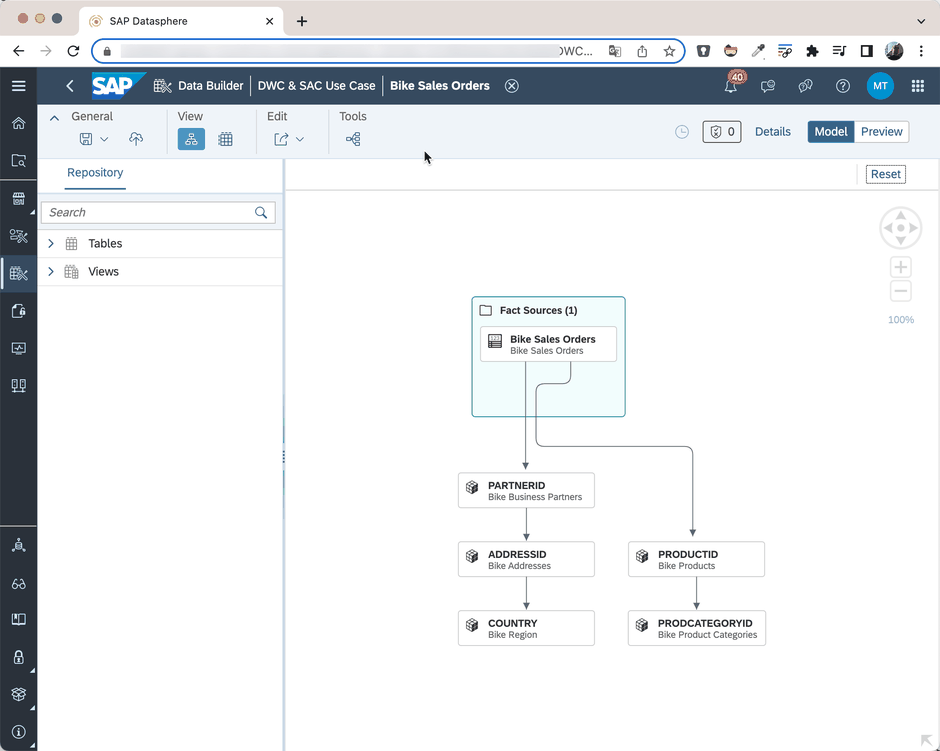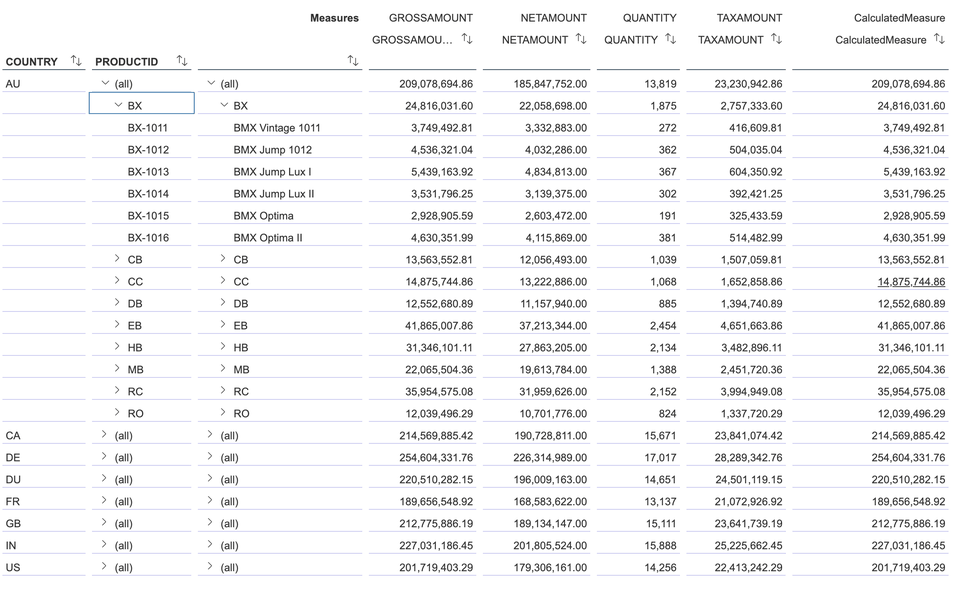Update 01/2025
Name change from SAP Data Warehouse Cloud to SAP Datasphere. Some links may break.
The Datasphere Analytic Model is now on all tenants available. With this wave, you have now the possibility to use instead of an Analytical Dataset (ADS) the new Analytic Model. The Analytic Model is a kind of cube which allows you to slice and dice your data model. I wrote about the preview access on December, and now I want to show you some details.
The Analytic Model is the new place to go as a model for the SAP Analytics Cloud (SAC). It allows adding several dimensions and build a nested view of your data. As you see in the screenshot above, you have now the possibility to make slice and dice like in Analysis for Office. You can easily drag and drop the dimensions to the columns/rows and build the view of the data you need.
As you see in the screenshot, the Bike Sales Orders fact model has two dimensions, the Partner ID and the Product ID. But I have now the possibility to go further down. For example, from the Partner ID to the Address ID and then to the Country dimension. So I have texts or hierarchies available which are build on the country dimension. This is how it looks like in the preview.
If I now add the Product ID, I can switch to present the hierarchy and this is how it looks:
As you see, the text which is associated to the Product ID dimension is displayed and the hierarchy which is available is also displayed. This is a real benefit for a short data analyze when you don't want to create a SAC Dashboard to see the data. Another feature of the Analytic Model is that you have the possibility to create restricted and calculated key figures. You can create basic calculated key figure but also calculated key figures with exception aggregations.
Exception Aggregation
The calculated key figures can have the following aggregation types:
- SUM
- MIN
- MAX
- COUNT/COUNTNULL/COUNTNULLERO
- AVG/AVERAGENULL/AVERAGENULLZERO
- STD
- FIRST
- LAST
So now the Analytic Model gives you a lot of possibilities which are only provided before by a SAP BEx Query. Besides the calculated key figures, we have now restricted key figures.
Restricted Key figures
The restricted key figures can be set to a fix value or can be filled with a variable depending on your needs. Which is nice because this input parameter is published to the SAP Analytic Cloud, so the end user can filter the value they require. Based on the restriction, you can also add an exception aggregation with the same aggregation types the calculated key figure has (see above).
Conclusion
I think the Analytic Model will push the Datasphere to the next level. It is now possible as a data architect to have a preview of the data the department will see in the SAC. So the understanding is better, and we have now the possibility to create restricted and calculated key figures in the data model and reuse them in the SAC Story. So you don't have to create them every time again. We will see how the Analytic Model will develop, but at the moment there are some ideas on the road map. My favorite is here, the support of the Business Layer. What are your thoughts on the Analytic Model? Let me know in the comments.
author.

Subscribe
- In my newsletter, you get informed about new topics
- You learn how to use Analysis Office
- You get tips and tricks about SAP BI topics
- You get the first 3 chapters of my e-book Analysis Office - The Comprehensive Guide for free
You want to know SAP Analysis Office in a perfect detail?
You want to know how to build an Excel Dashboard with your Query in Analysis Office?
You want to know how functions in SAP Analysis Office works?
Then you have to take a look into Analysis Office - The Comprehensive Guide. Either as a video course or as an e-book.






Write a comment